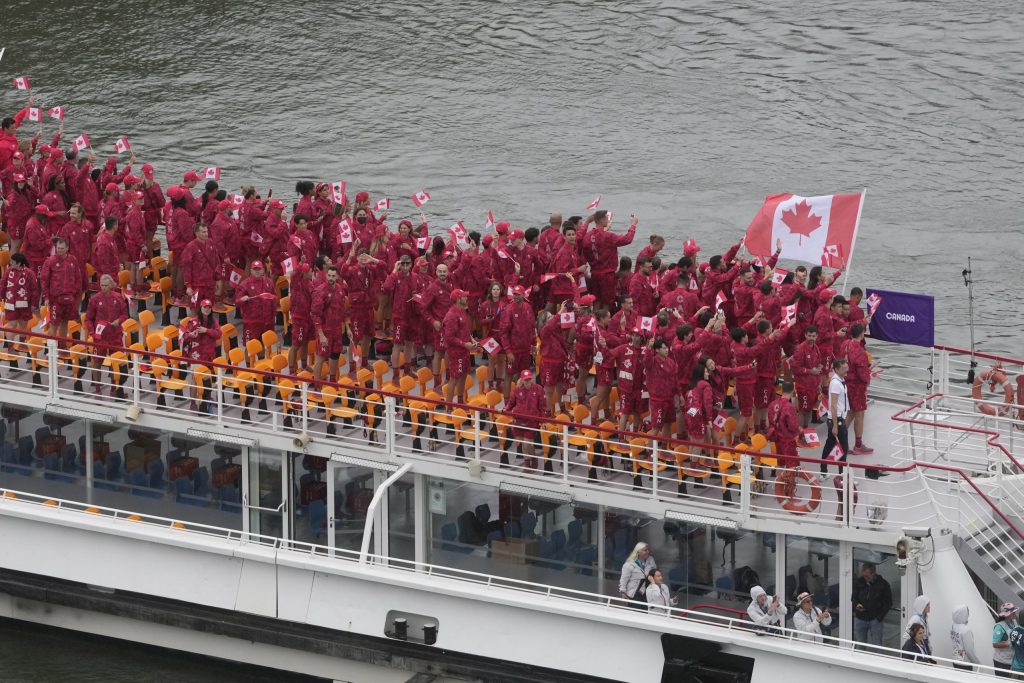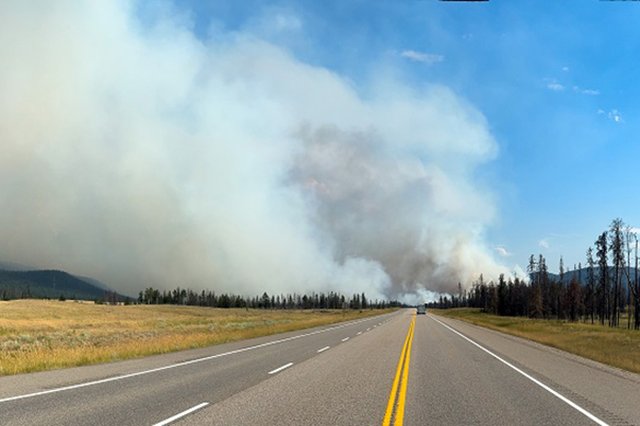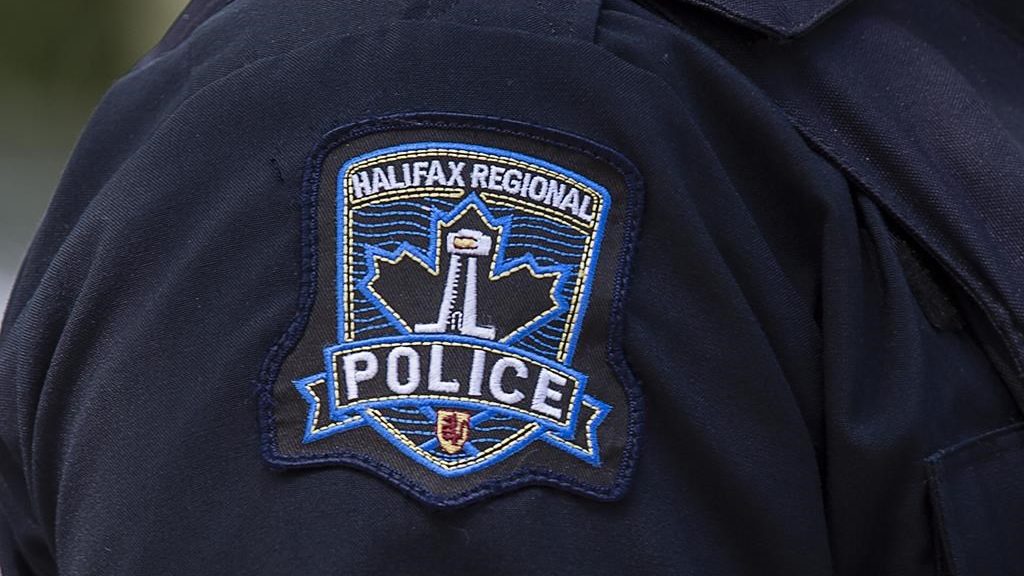HalifaxYesterday : An RMS Titanic Mystery: The Rabbi Who Wasn’t
Posted Apr 27, 2020 01:33:00 PM.
Following the sinking of RMS Titanic in April of 1912, cable ships retrieved many of the bodies from the sea and brought them to Halifax for burial at the Fairview Lawn, Mount Olivet and Baron deHirsch cemeteries. A photograph exists wherein three men are seen standing in the latter at the just completed gravesites for ten Titanic victims. The Jewish cemetery is located along Windsor Street and Connaught Avenue adjacent to Fairview Lawn. From the time this image surfaced, many historians and authors have assumed that the man standing in the middle was either one of two rabbis residing in the city at the time. However, a few years ago, a different notion concerning the identity of one of the men began to emerge. (See Images 1 and 2 above)
The photograph, taken in November of 1912, was from the collection of local author/historian Russ Lownds, whose father had been an employee of the White Star Line. The man with his arms folded and standing to the left in the image has been identified as a local stone cutter Frank Fitzgerald. The man on the right, Fred Bishop, was a local contractor and monument maker. The man in the middle was long thought by authors and historians to have been either Rabbi Jacob Finegold or Rabbi M. Walter (first name unknown). The photograph was published in Titanic Remembered by Alan Ruffman (1999, Formac) and has appeared in several other books and articles.
Over the years, the image has proliferated throughout the Internet with the caption identifying the middle man as alternately Finegold or Walter. Many assumed he was a rabbi simply because of his overall appearance. However, after Alan’s book was published, a member of the Baron de Hirsch congregation, the late Frank Medjuck, raised doubt that this man was a rabbi. There are two fundamental reasons why the person in the middle could not have been a rabbi. The first, pointed out by Mr. Medjuck, was that a rabbi would never have set foot inside a cemetery without wearing a head covering of any kind. Close examination of the high quality print housed at the Maritime Museum of the Atlantic clearly shows the man wore no hat or yarmulke. The second reason, brought to my attention by Dr. Nathan Fishman, was that the man in the photograph had a neatly groomed beard. An Orthodox rabbi from that time period would not have trimmed his facial hair. (See Image 3 above)
According to the 1911-12 McAlpine’s Halifax City Directory, Vol. XLIV, “Reverend Finegold J, rabbi,” boarded at the home of Louis Whitzman on 80 Gerrish Street. Finegold was the spiritual leader of Halifax's Baron de Hirsch congregation located in an old converted church on the corner of Starr and Hurd Streets. A schism had developed between this group and a family named Webber, who were in the process of organizing their own congregation which they later established in a building on Proctor Street. Therefore, it came as no surprise to discover there was another Jewish clergyman in the city in 1912. McAlpine’s also shows that “Reverend Walter M, rabbi,” was boarding at the home of one Abraham Webber on 245 Brunswick Street. Walter was likely the Webber’s spiritual leader. The Baron de Hirsch cemetery would have been shared by both congregations. (See Image 4 above)
A temporary morgue had been set up at the Mayflower Curling Rink to accommodate the Titanic casualties retrieved from the sea by cable ships. According to an article in the 4 May 1912 edition of the Halifax Herald, Rabbi Walter had gone from body to body two days earlier to determine whether any of the deceased from Titanic were Jewish. Walter was convinced that 44 of the 190 bodies brought in by CS Mackay-Bennett were those of Jewish men. However, the article stated he was given the right by the registrar of deaths to remove only nine [ten] of the bodies. The rabbi separated these from the rest and had them removed to the nearby Baron de Hirsch Cemetery burial vault. (See Images 5 and 6 above)
Rabbi Walter was deeply concerned that the burial of the Jewish Titanic victims take place before the fast-approaching Sabbath. So, early the next day, he seized upon the opportunity to open several more of the caskets waiting for internment at Fairview Lawn Cemetery. After he determined that ten more of these bodies were Jewish, he had several members of the Jewish community take them back to the mortuary room. That afternoon, a somber procession of mourners – consisting of dignitaries and the general public – arrived at Fairview Lawn for a service and mass burial. Once it was realized that the coffins had gone missing, the authorities were called in. They, in turn, directed the ten caskets to be returned to the Mayflower Curling Rink. Following a brief investigation, no more bodies were assigned to Rabbi Walter.
White Star Lines later determined that one of the bodies buried in the Baron de Hirsch Cemetery was a second class passenger, Michel Navratil, a Catholic, who had purchased his ticket under an assumed name, Louis M. Hoffman. His wife had been awarded full custody of their two young sons after a separation, but Navratil absconded with them during an Easter weekend visitation. Fortunately, the boys survived the sinking. Another man, Frederick Wormald, Titanic’s saloon steward, was identified as Anglican. In actuality, no one knows if any of eight remaining Titanic victims buried in the Baron de Hirsch cemetery were Jewish. (See Image 7 above)
The only available evidence of the aforementioned events involving Rabbi Walter were a few archived newspaper articles and the photograph taken at the Jewish cemetery. In May of 2012, I was informed that an elderly woman from somewhere in Nova Scotia had contacted Nimbus Publishing. She claimed that the man in the middle could not possibly be a rabbi but was, in fact, her grandfather named Alexander McDougall, the superintendent of Camp Hill Cemetery and an employee of Fairview Lawn. The woman, Mrs. Burns, said she had just read a new book on Titanic in which the photograph appeared and that she also possessed photographs to prove her assertions. Unfortunately, she did not have access to a scanner or the Internet, and a record of her contact information was not kept.
The 1891 and 1911 Canada Censuses show that Alexander McDougall had been a gardener by profession before he became cemetery superintendent. His death certificate from Nova Scotia Vital Statistics (N. S. Archives website) shows he died at 76 years of age on 19 October 1925. His newspaper obituary revealed he had been employed by both Fairview Lawn Cemetery and the adjoining St. John's Cemetery for fifteen years. It stated that Mr. McDougall was a well-known and obliging public official and several of his lifelong activities in the community were also mentioned. He was buried at Fairview Lawn. (See Image 8 above)
Research from Dave Cogswell, an information analyst at the Halifax Regional Municipality Archives, confirmed that Mr. McDougall had been appointed Keeper of Camp Hill Cemetery (registrar and superintendent) in 1891, following the death of Mr. James Hutton. The 9 May 1918 minutes of the Board of Control show they were in the process of trying to find someone to fill the vacant position. Just over a year later, Mr. Jacob Conrad succeeded Alex McDougall.
Despite having established Mr. McDougall’s identity and profession, the search for further details about the enigmatic Rabbi Walter yielded very little. So, several months ago, I asked Cara MacDonald, Reference Services Manager for the Canadian Museum of Immigration at Pier 21, for assistance in finding new information about Rabbi Walter. She kindly obliged and located one record stating that on 20 September 1911, a 50 year-old man by the name of Joseph Walter from Massachusetts crossed the border into Canada at McAdam Junction, New Brunswick on his way to Nova Scotia. Close examination of the document revealed his occupation: “Jewish Rabbi.” Cara also tracked down an entry in the 1910 U. S. Census that lists a professional cantor of the correct chronological age named Joseph Walter residing with his family in Suffolk, Massachusetts. They later moved to New York City. (See Image 9 above)
Although being a cantor is a vocation unto itself, requiring someone of good character and voice, it is not unusual for a rabbi to be a “hazzon” as well. Typically, an Orthodox synagogue hired a professional cantor from out of province to lead the congregation in prayer for the High Holidays. Rosh Hashanah, the Jewish New Year, took place on 22-23 September 1911. Yom Kippur, the Day of Atonement, occurred on 1-2 October. It is reasonable to assume Rabbi Walter had been brought to Nova Scotia by a congregation to lead the holiday services. It cannot be said for certain that Rabbi Joseph Walter continued to reside in the province for several more months, and that he was the same clergyman involved in the circumstances surrounding the Titanic victims’ bodies. However, his distinctive surname and timely appearance in the province gives credibility to this notion.
Alexander McDougall's presence in the photograph at the cemetery remains a mystery. His appearance may simply have been a conciliatory gesture on the part of the White Star Line to include him. After all, several bodies were removed from Fairview Lawn without his knowledge or consent. Thus, one might assume the image was simply what is referred to today as a photo-op. The search for portrait images of Mr. McDougall and Rabbi Walter is ongoing. And while this recent information about the 1912 photograph may have helped to erase a few historical inaccuracies, numerous unanswered questions still continue to swirl around the circumstances which led up to this unique visual remnant of RMS Titanic’s enduring legacy.
This article has been re-edited, updated and condensed for publication at HalifaxToday.ca. It originally appeared in The International Titanic Society’s quarterly journal, Voyage #110, December 2019, under the title “The Rabbi Who Wasn’t.”








